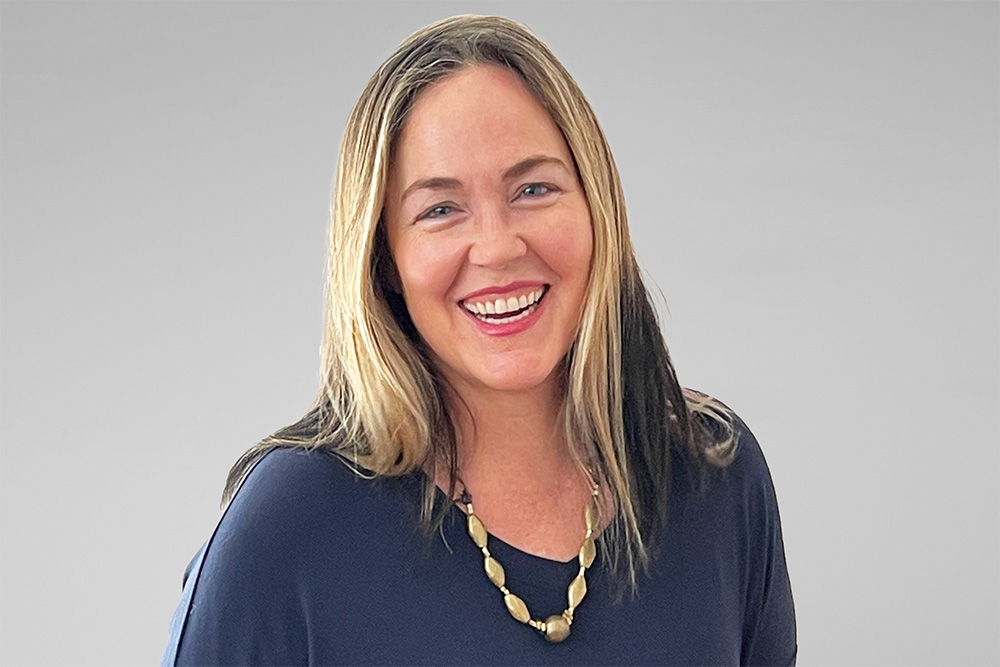In the latest installment of McChrystal Group’s Senior Advisor Interview Series, Susan Douglas discusses how to pair human-centered design with the people skills increasingly needed in today’s workforce. Susan touches on her passion for fostering resilience and creativity within teams, believing that these qualities are essential for thriving in today's rapidly evolving business landscape.
Susan Douglas is a professor at Vanderbilt University, where she conducts research and teaches undergraduate and graduate courses in leadership, designing and leading teams, and program evaluation. Susan, a respected leader in digital transformation and innovation strategy in healthcare, offers insight into the strategic move of starting with empathy and purpose to accelerate the impact of data-informed decision making.
Q: How can organizations integrate technology into practice while maintaining a people-centric approach?
A: Over the course of my career I have learned that we risk implementation failure when we focus too much on the data and not enough on the people using the technology.
Data are just signals. Without being interpreted to become information, data have little meaning. Even when AI or other technology assists with interpretation, eventually a human needs to make sense of the data in a way that influences what they do, how they think, and their why (purpose) when they lead in one direction and not another.
This kind of ‘sensemaking’ with data can be supported with the use of visuals. I’m not talking just about graphs and charts, but about whiteboarding together. I’m not an artist at all but I’ve learned that using visual facilitation methods can create an inclusive space that brings a team together, boosting agile thinking and values alignment.
We say that the technology is only as good as the behavior change that results. Outside of fully automated processes, the purpose of data is to impact how people think and behave as well as how organizations learn. A key operating principle is to align data use not just with workflows but also with the values and beliefs of the people that make up a team.
A compelling example of this operating principle at work comes from a Department of Defense project we completed about a decade ago. The military health risk screening process consisted of a survey followed by a meeting with a medical provider, who reviewed the data and made follow-up recommendations. In an earlier evaluation, we found that this two-step process increased access to needed care for most service members, but not for those unwilling to disclose behavioral health concerns on a survey. Barriers included beliefs about the stigma of help-seeking and concerns related to security clearance policies.
Therefore, we developed a workshop for military medical providers that focused on enhancing a strong patient-centered relationship that establishes trust. Even with brief appointments, the results showed that medical providers who went through the training increased the number of service members where they identified behavioral health concerns. They also gave more education and referrals to confidential counseling resources.
Q: How can organizations effectively utilize data for informed decision making?
A: I recommend an overhaul of how data are identified as worthy of capture. Typically, organizations decide on key business metrics at the top level and then look down through the organization to data they already have or can construct. When we base our metrics on what is available, we create a burden of reporting out that may not capture what actually matters. For example, in healthcare, it is easier to measure productivity such as if an appointment took place as opposed to the quality of the appointment, as in was the treatment in that appointment effective.
An approach that starts with the bottom level, or point of service, aligns data capture with what ultimately contributes to business objectives, which are satisfied customers, healthy patients, or happy employees. I call this the golden thread of data-informed decision making, which when aggregated, creates value at every level of an organization up to the C-Suite.
The shift in mindset from performance to value starts with empathy for the people on the front line. I advocate for leaders to walk around and ask their frontline workers, 'What do you wish you knew? What information do you need to help you be better at your job?’ When we prioritize frontline needs, we get to the heart of what matters to quality service and products.
The golden thread approach also creates more actionable data at the leadership level. Gathering data that is not relevant to everyday work is often sidelined or can even get in the way when other priorities come into play. When data capture is aligned with use, we increase availability. We also adopt structures to support and track data capture and then use it to continually identify weak links and strengthen organizational learning.
The distinctly human quality of sense-making and data can go beautifully together when we prioritize capturing data that employees can use in the moment to improve a relationship with a customer or empower them to do their job better. Leaders need to remember that aligning data capture with what matters also creates vulnerability for employees, by shining a light of accountability on how things are going at all levels. Compassionate accountability works well in a culture of data transparency and using feedback for learning.
Q: What steps can leaders take to foster a culture of curiosity and openness in their organizations?
A: It's certainly a mindset shift that takes a lot of practice. When using data for decision-making, we encourage people to shift from asking, “What is the data telling me?” to, “What can we learn from the data?” Even a simple question like, “What are we noticing here?” is a powerful way to get this multiplication of perspectives, and you get a much richer outcome in terms of the kinds of ideas that are generated and decisions that are made.
When we use the data to form hypotheses and questions, we model curiosity and openness, which are seeds of creativity and innovation. Satya Nadella, Amy Edmondson, and other great thinkers are encouraging us to shift our organizational cultures towards learning and feedback so we can get better at solving the kinds of problems we face in today’s world.
This is not a simple change and takes a certain level of vulnerability to move from knowing to learning. We must be willing not to be right, but rather use questions to crowdsource answers within our teams. The side benefit of a culture like this is that people feel a sense of belonging and contribution that can foster resilience.
Q: We often hear leaders saying they want to instill resiliency in their teams. What does resiliency mean to you, and how can it grow among teams?
A: If you look up resilience in the dictionary, the first definition you’ll find relates to being tough. That’s often what we hear from leaders: our people need to get better at withstanding adversity and toughen up in the face of constant change. But toughing it out comes with a cost. It’s like driving a car down a mountain with one foot on the gas and the other on the brake pedal. You’ll still reach your destination but with higher wear and tear on your team. Thus begins a cycle of less energy for the next big hurdle until, eventually, people run out of gas.
How do we build resilient teams that get stronger as they embrace change? We start with a clear and compelling mission that helps the team discover its purpose. Team purpose is much more than the task – it is what only the team can do collectively that team members cannot do apart. There is a quote by Antoine de Saint-Exupéry, the author of The Little Prince, where he said "If you want to build a ship, don't drum up the men to gather wood, divide the work and give orders. Instead, teach them to yearn for the vast and endless sea."
Purpose-driven teams grow stronger by learning to flex with change instead of resisting it. Webster’s second definition was elasticity: the ability of a substance or object to spring back into shape. Resilient teams are agile, able to shift direction and add value beyond performing the task at hand. They create norms where healthy conflict, creativity, and curiosity thrive because today’s solutions are likely not enough to solve tomorrow’s problems. Crucially, they stay pointed toward the north star of purpose. This begins a flywheel effect, where each rotation lends more energy for the next challenge.




